What bug chewed on my plants last night?
Under cover of darkness, a variety of animals might chew on your leaves. So how do you know who to blame and what to do about it?

As the sun sets and streetlights come on, a host of late-night prowlers are getting ready to feast on your plants. If you don’t catch them in the act, it can be startling to wake up to plants with holes chewed in them, missing leaves or being cut off completely at the base. To find out what damaged your plants in the night, you might have to get out there with a flashlight and try to see for yourself. To help know what you are looking for, this article will introduce you to some of Michigan’s most common night feeding invertebrates. If you are looking for information about animals with backbones, like deer, rabbits and voles, you can read about them in this article from Michigan State University Extension, “Deer and rabbits and mice, oh my!”
Cutworms
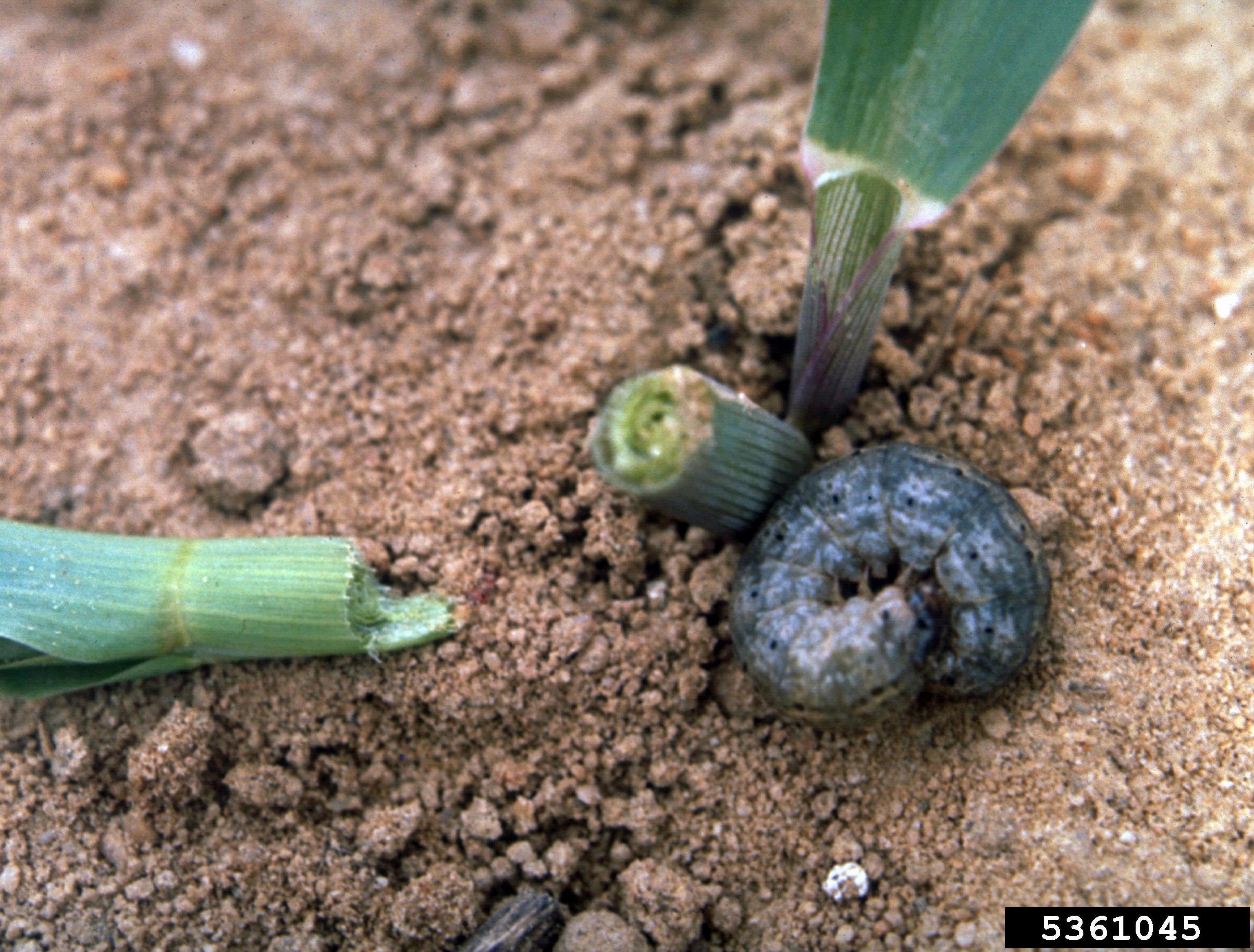
Cutworms are caterpillars in the order Lepidoptera (family Noctuidae). The name cutworm comes from the tendency of some species to nibble around the base of stems, leaving the top of the plant completely severed and lying on the ground. However, there are many different species of cutworms in Michigan and not all of them follow this behavior. Some cutworms climb onto plants and chew holes in leaves or eat entire leaves. They turn into moths once they mature to the adult stage.
For help with cutworms in vegetable gardens, see this article from Michigan State University (MSU) Extension, “Cutworms in the vegetable garden.”
Slugs
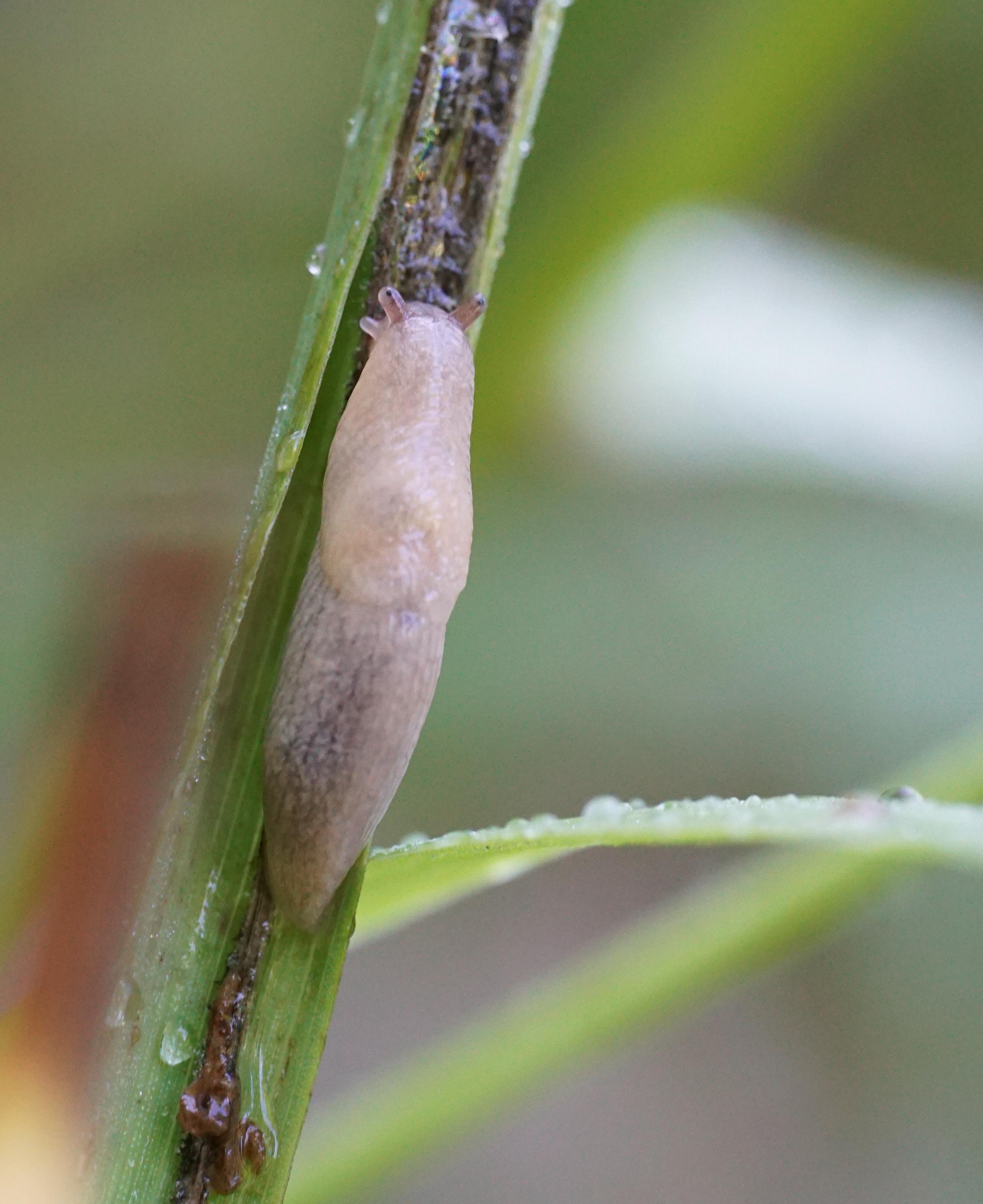
Slugs are molluscs that are more closely related to clams, mussels and snails than they are to insects. Slugs will feed on a variety of ornamental plants and vegetables. They are most active at cool temperatures, in moist areas, and are most troublesome during spring and fall in Michigan. They have a rasping mouthpart that makes holes in leaves that are more ragged than the clean-cut holes that insects chew in leaves. They also tend to leave behind a slime trail that is visible in the daytime on plants they fed on the night before.
Read more information about slugs and what to do about them in this article from MSU Extension, “Slugs are making tracks on my garden favorites!”
Flea beetles
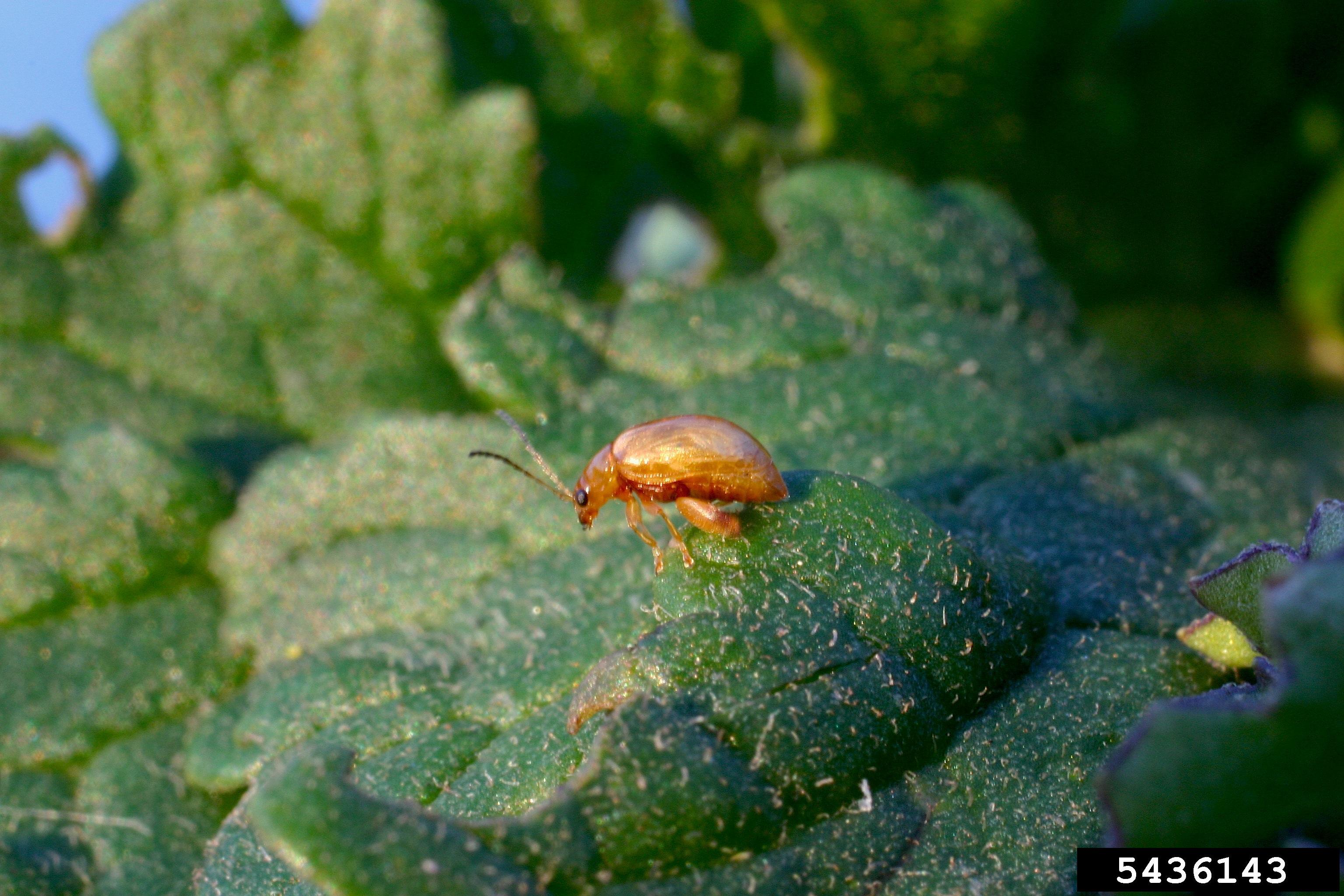
Flea beetles represent another large and diverse group of beetles (order Coleoptera, family Chrysomelidae). Flea beetles (subfamily Alticinae) have enlarged hind leg muscles, which gives them the ability to jump rapidly and over great distances (for their size). Flea beetles chew small roughly circular holes in leaves that may leave them looking skeletonized. The damage from flea beetles is more severe early in the season, particularly on broadleaf vegetable seedlings. Mature plants can tolerate flea beetle damage and management is usually not necessary once they reach this stage.
Read more about flea beetles and their management from MSU Extension.
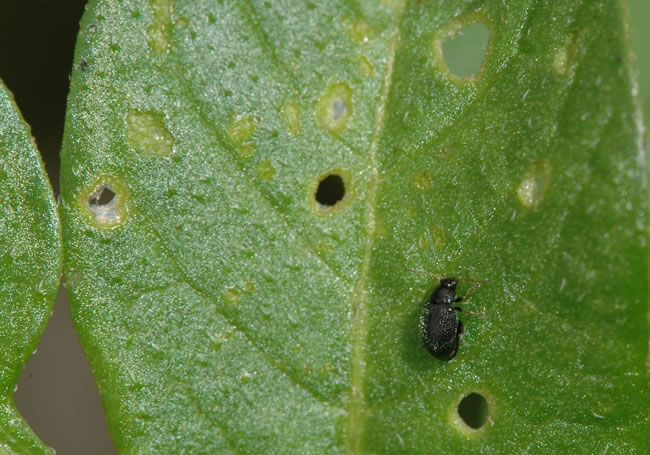
Asiatic garden beetle

Asiatic garden beetle (Maladera formosae) is a member of the beetle family Scarabaeidae (order Coleoptera). It shares some similarities in appearance and behavior with other pests in this family, such as Japanese beetle (Popillia japonica), European chafer (Rhizotrogus majalis) and rose chafer (Macrodactylus subspinosus). It can easily be confused with the May/June beetles (Phyllophaga spp.) and a variety of other less harmful scarabs (e.g., Serica spp.)
Of all the aforementioned species, Asiatic garden beetle is the only one you will find causing severe damage to your plants at night. They are also commonly attracted to lights in the evening, which might be your first warning they have arrived for the season. Asiatic garden beetles are small (0.375 inch), tan/brown beetles with a slight metallic sheen. Adults tend to begin appearing towards the end of June in Michigan.
Read more about Asiatic garden beetles in this article from MSU Extension, “What are all those little brown beetles on the porch?.”
Weevils

Weevils are beetles and include very a diverse group of insects in the order Coleoptera (family Curculionidae). Not all of them damage plants at night, and many of them can be seen lounging around on your plants during the day. Most weevils possess a distinctive snout that includes their mouthparts. Leaf-feeding weevils chew inward from the edge of the leaf, so the leaves are left with a ragged edge or notched appearance.
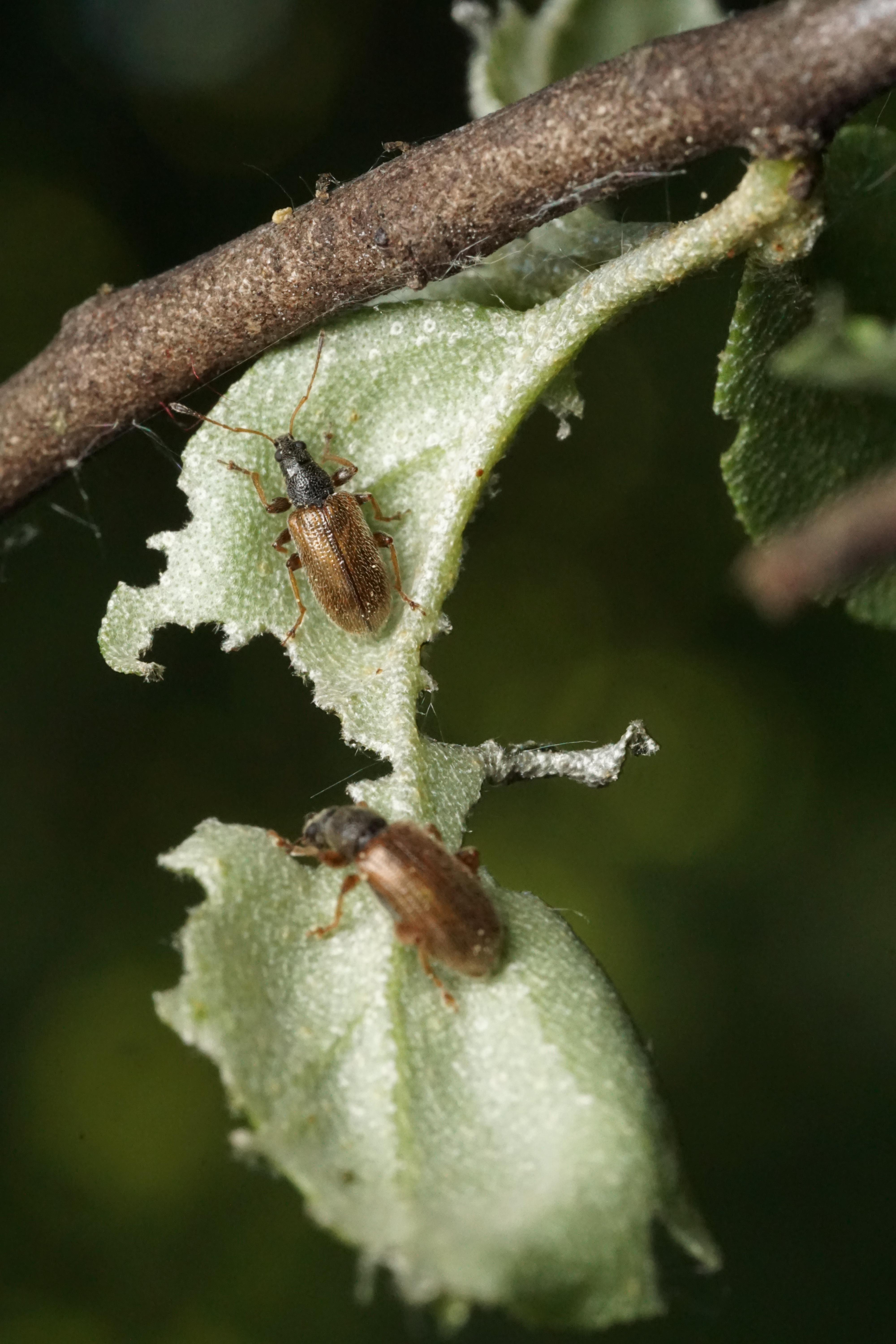
Less concerning nighttime feeders
Many insects and other invertebrates feed on plants at night. Most of them cause very minor damage and are more of a curiosity than anything else.
Katydids
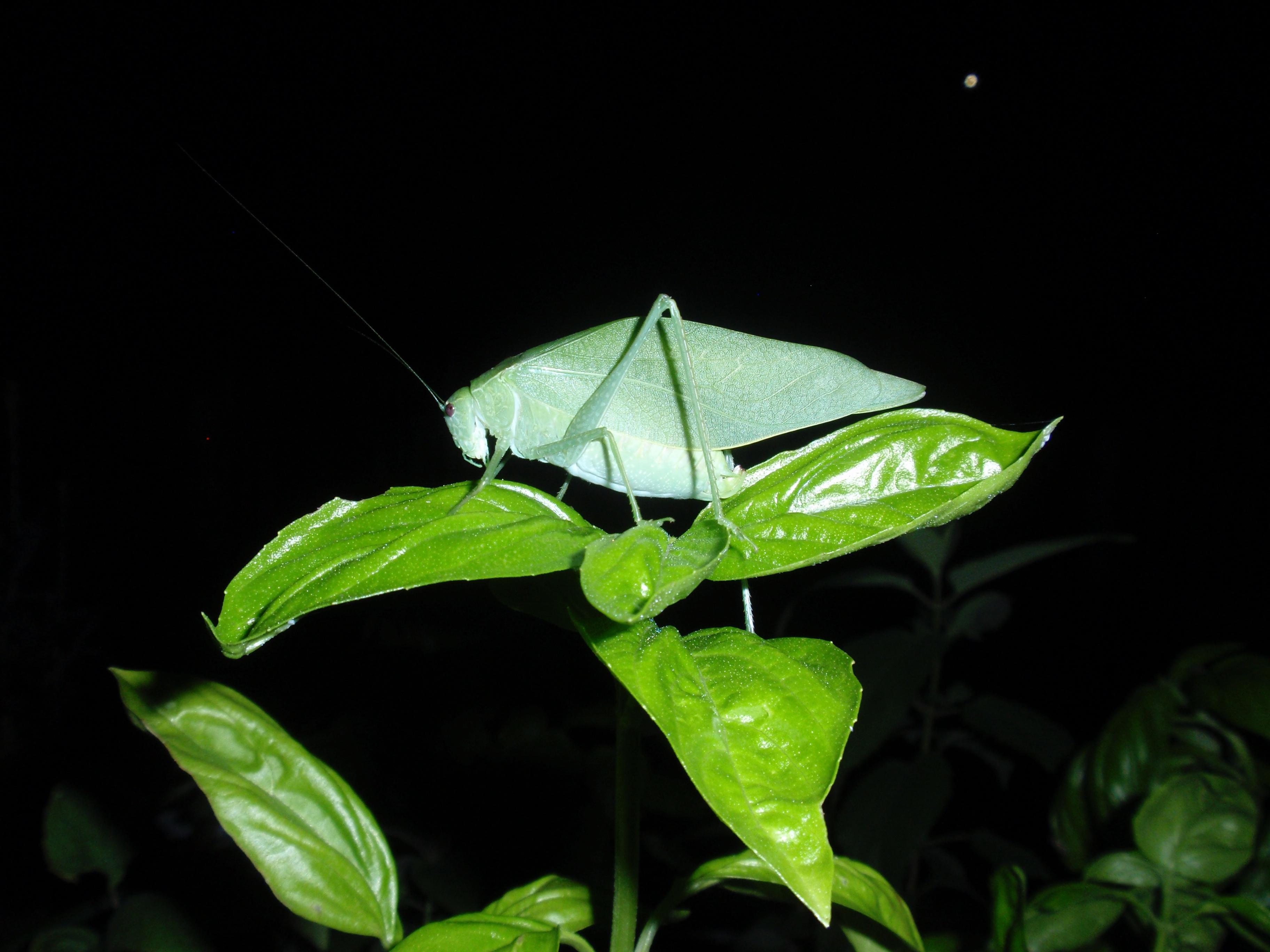
Katydids (family Tettigoniidae) are relatives of grasshoppers and crickets. They are more well known for their rasping calls heard on summer nights than for their herbivorous habits. Their feeding doesn’t usually cause significant harm to plants because they take only a few bites of a leaf before moving on to feed elsewhere. This kind of nibbling spreads the damage out across several plants and is less harmful than the more intensive feeding that other insects might engage in.
Read more about katydids in this article from MSU Extension, “Michigan insects in the garden – Week 12: Katydids.”
Earwigs
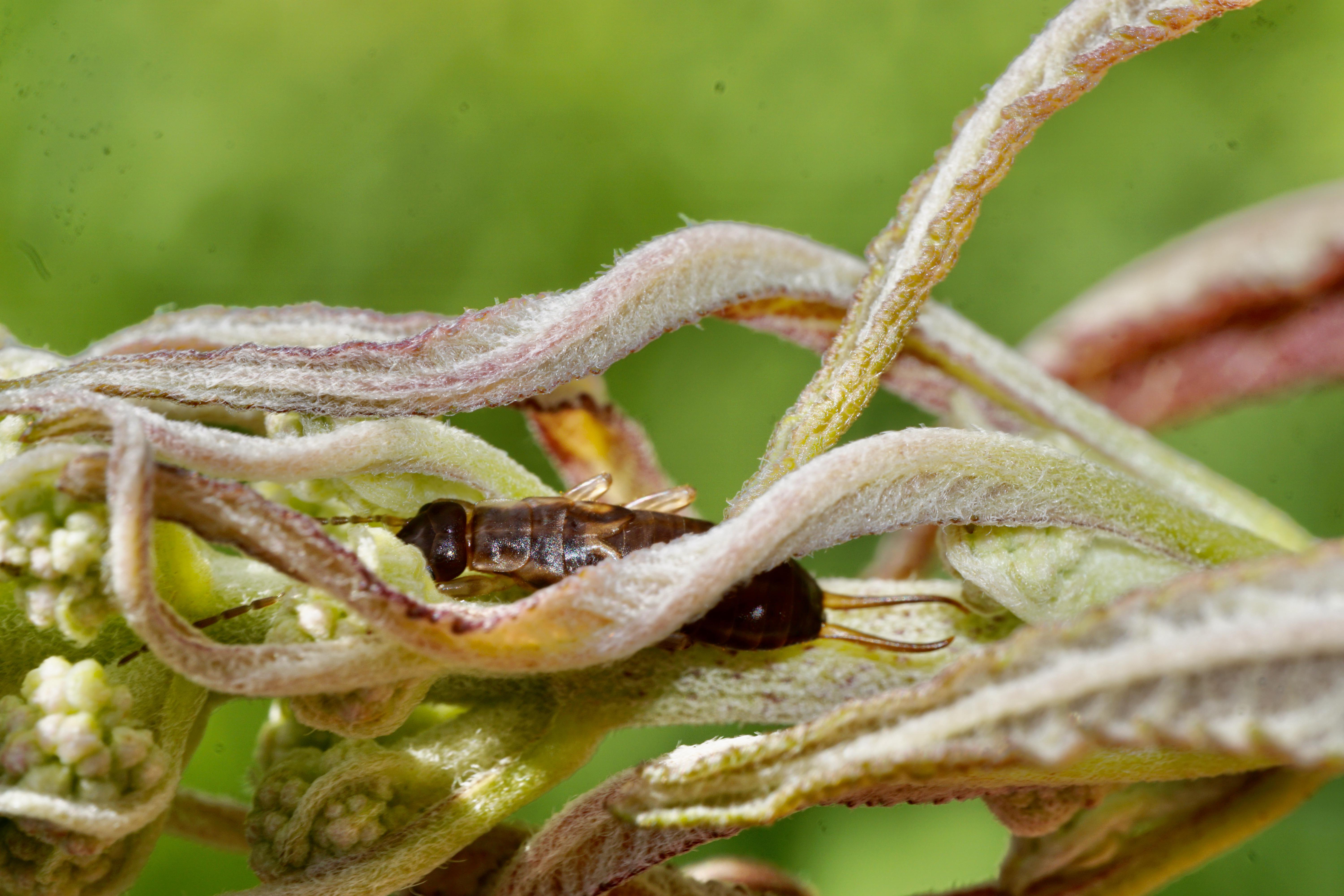
Michigan hosts several species of native earwigs (order Dermaptera, family Forficulidae), but the most common species by far is the introduced European Earwig (Forficula auricularia). They might never win a popularity contest amongst Michigan residents, but their reputation for causing harm to plants is largely undeserved. Earwigs chew on tender plant parts and can sometimes be blamed for damaging flowers and tender vegetables in the garden. On the other hand, they also contribute to pest management by eating aphids and other soft-bodied insect pests.
You might find them sheltering during the day between leaves or flower petals. However, their presence on a plant does not necessarily mean they were eating it. Nighttime damage to plants is more often caused by one of the other insects mentioned above.
What can be done to protect my plants?
Identifying the main culprits is essential so that you can choose management tactics that fit the pest. There is no one-size-fits-all solution to the problem of nighttime plant damage, and it may not be practical to completely prevent nighttime feeding. Fortunately, most plants can tolerate some level of chewing damage.
Excluding pests with screens or netting can sometimes be an effective tactic, especially for the more mobile pests (weevils and other beetles). Netting can be removed during the day. However, keep in mind that some of these pests will shelter immediately below the plants and could become trapped within the netting rather than excluded by it.
Many nocturnal invertebrates shelter in places that hold moisture during the heat of the day. It may be necessary to remove plants that are too crowded or prune them back to improve air flow and penetration of sunlight to soil surfaces surrounding the plants. Removing materials or debris that provide shelter can also help to reduce their populations in your garden.
Soft-bodied pests like slugs, earwigs and cutworms can be deterred by dusting the surfaces around your plants with diatomaceous earth. This material is no longer effective once it comes in contact with water from irrigation, rain or heavy dew, so it may need to be reapplied nightly until the threat of damage has passed.
Be sure to read and follow all the directions on the label before using diatomaceous earth or any pesticide. Following the label directions will ensure the product’s effectiveness, your safety and the safety of others (including pets and wildlife).
Find more information about gardening and insect pests on the Gardening in Michigan website from MSU Extension.



 Print
Print Email
Email